Introduction: In this article, Mary Harrell-Sesniak uses old newspaper articles to help tell the story of one of her treasured pieces of memorabilia. Mary is a genealogist, author and editor with a strong technology background.
There are several old sayings and jokes that always begin or end with:
There are two types of people in life.
If you want to apply this to genealogy, it’s better stated as:
There are two types of people in life – the purgers and the preservationists!
I was thinking about this after finding an old postcard of mine in my files. We as family historians are always the preservationists. We reject the notion that purging somehow unburdens ourselves – and we find stories in the memorabilia of the past, even a simple postcard.
This is the story about one of mine, and I’ll use old newspaper articles to help tell my story.
Every Item Has a Story
If you’re ever faced with the inevitable and sinking feeling that some of your descendants will turn your treasures into trash, document what you have.
Even my postcard has a compelling story.
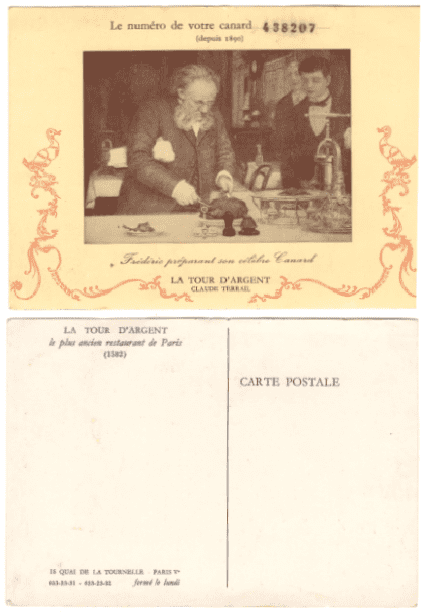
It’s from the oldest restaurant in Paris, La Tour d’Argent. If I neglect to tell its story, then I’m somewhat to blame if this postcard ever ends up in the trash.
Here are some examples and strategies to enhance the tale your treasured memorabilia tell.
The Background
Start with the background. Where did you get the item? Was it a gift, and what experiences are associated with it?
Here is the background of my postcard.
For high school graduation presents, my maternal grandmother gave her grandchildren money. Grannie, whose mother was a worldwide traveler, instilled that love in all of us, so the stipulation was that we should use the money for a trip.
My funds went toward a European plane ticket and a Eurail Pass. Joined by my childhood friend Laura, we flew by ourselves to Paris and proceeded to travel all over Europe. It was very easy, as you only needed to show the Eurail Pass to get on a train and ride. No reservations were required, although at every border someone got on to check your credentials. At night we stayed in youth hostels for the grand sum of about $1 a night.
It was a blast.
The Other Graduation Gift
What else can you tell about your treasured memorabilia? There’s more to tell about my postcard.
Laura’s parents were good friends with mine, and together they decided to give us an additional graduation treat: money to dine at a world-class restaurant in Paris, La Tour d’Argent which translates as “The Tower of Money.”
We saved this treat until the end of the trip. With a reservation, we proceeded to the restaurant which has a commanding view of the Notre Dame Cathedral. It was all very posh and unless you were the host of the party, you received a menu without prices. No sense burdening your guests with the financial decision.
As I was deemed to be the hostess, my menu displayed the prices. I’m pretty sure my eyes got as big as quarters, as this was the most expensive meal I’d ever had. Even way back in 1896, when the prices were published, this restaurant was considered expensive. This 1896 newspaper article notes there was even a charge for napkins and cloth. The accompanying cartoon of a diner with sticker shock has the caption: “Do you like bisque [soup]?”
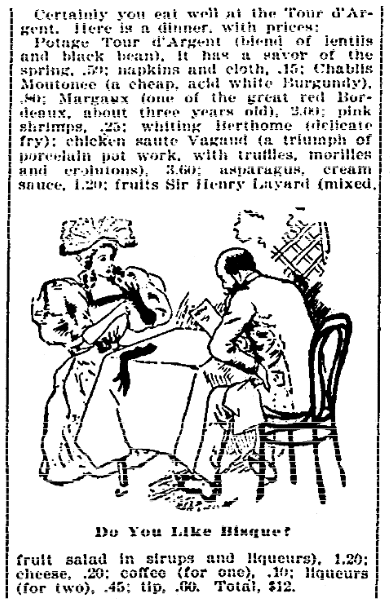
The dinner described in this article costs $12 in 1896 – about $349 (per person) today! Little wonder the man in the cartoon is suggesting they settle for mere soup instead.
When Laura and I dined there, the preferred cuisine of the establishment was duck, a long-standing tradition we can read about in this same 1896 newspaper article, which describes Rouen Duckling. At that time, there was an elaborate style of preparation – “the bird is jollied up under your eyes” – which I won’t reprint since it doesn’t seem appetizing by today’s standards.

Upon finishing our duck dinner, the staff presented us with postcards enumerating how many ducks they have served – which is how this postcard came into my possession. As you can see, I was served duck number 438,207. That’s a lot of ducks!
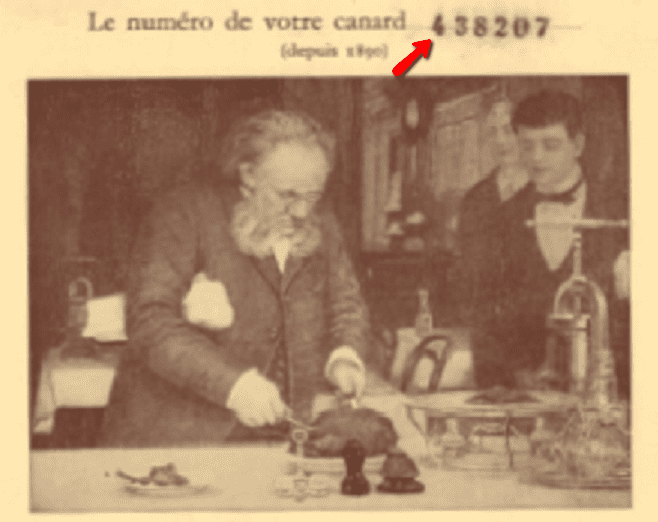
Colorful Histories
Don’t forget to search for more details about your treasured memorabilia. You never know what secrets they might contain.
For example, La Tour d’Argent has a colorful past, some of which we learned after being presented with a souvenir playing card denoting its history.
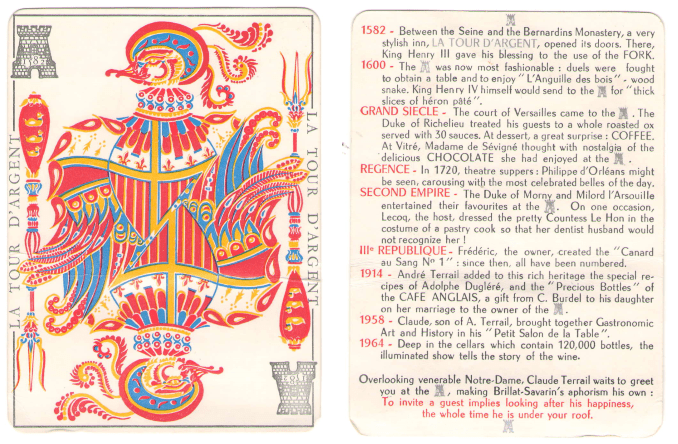
- In 1582, it was where King Henry III gave his blessing to the use of the fork!
- By 1600, duels were fought to obtain a table and to enjoy wood snake. (Personally, I’m glad we weren’t served that.)
- Over the centuries, the famous and many royal persons dined there.
Supplementing the Story
But the playing card doesn’t tell all the stories. If you search GenealogyBank’s Historical Newspaper Archives, you’ll find quite descriptive and complimentary newspaper articles about La Tour d’Argent. There are also other newspaper articles, such as this one, that tell tales of scandal.
In 1872, a man named Debourg, who had stabbed his wife for infidelity, was given a reprieve from jail to dine with an agent of the police at La Tour d’Argent. It was quite shocking, as his bill of fare consisted of soup, fish, two entrees, asparagus, cheese, liqueurs, two bottles of Bordeaux, cigars and coffee. Must have been a big improvement over prison meals!
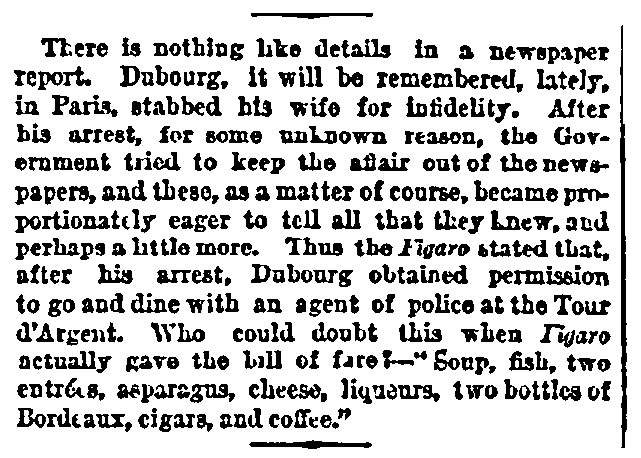
End of the Story
I hope this blog article will inspire you to supplement your memorabilia with newspaper intrigue. If there is a twist to how it affected you, don’t be afraid to mention it.
In my case, there is a surprising twist to my duck dining story.
As people close to me know, this was the last “canard” (French for duck) I ever ate, as I almost became a “dead duck.” After leaving La Tour d’Argent satiated and happy from this extraordinary meal, we strolled through the Tuileries (beautiful gardens of Paris.) A small rash developed on my skin and continued to expand until I was quite ill. As my friend recently recalled:
It was very scary watching all the huge welts develop on your face and neck! We were silly not to go to a doctor. The foibles of youth.
That day I learned I had a life-threatening duck and down allergy, one that exists to this day. Nowadays I don’t go far without meds that could save my life. So I think I’ll keep the postcard to remind my descendants to watch out for inherited allergies. Wouldn’t want any of them to succumb to them!

They’ll probably wonder about my many bird photos – but that’s a story for another day. I guess I better document them soon.
Related Articles:
